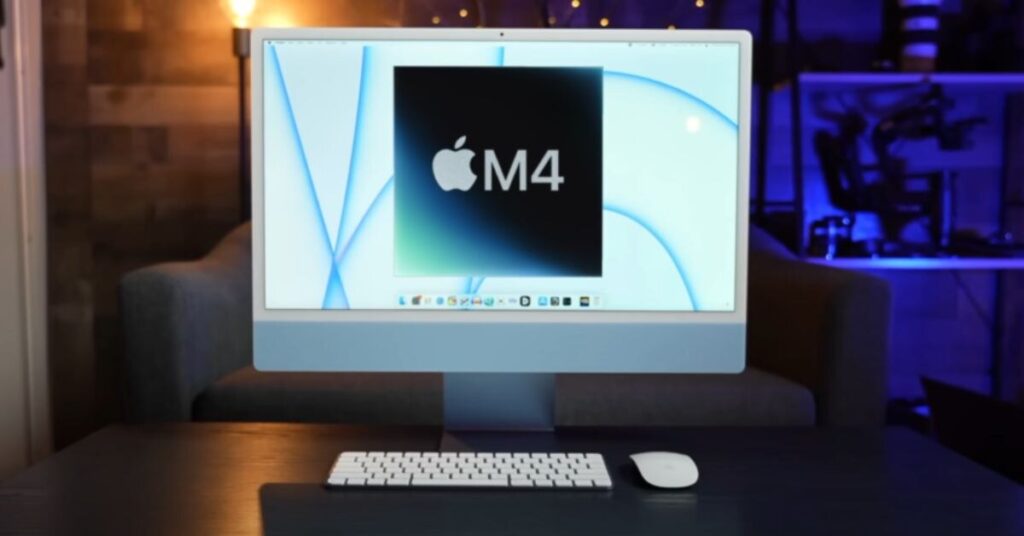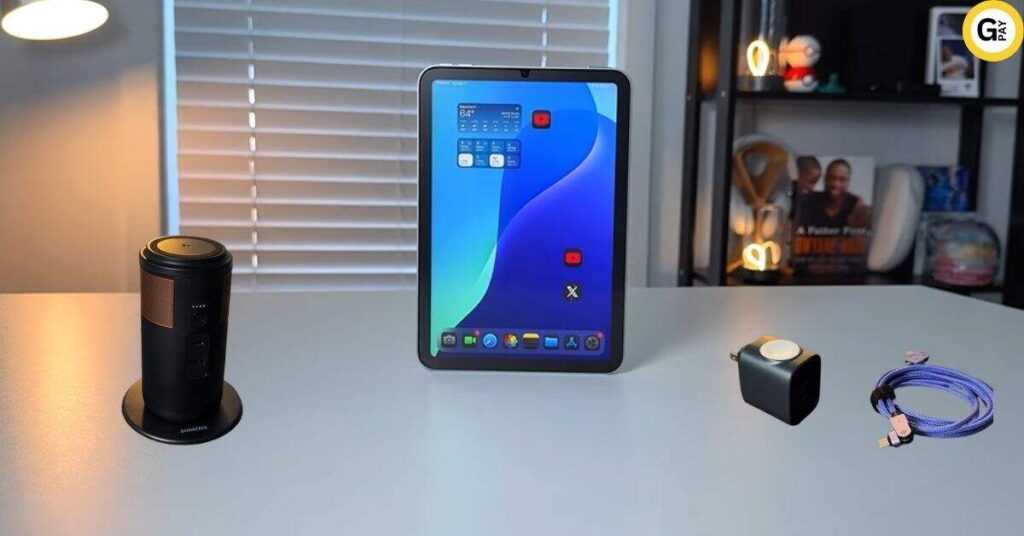Should you upgrade to the new M4 iMac, and if you do, which model should you buy? Well, in this article, I’m going to be sharing 10 major reasons to upgrade because Apple actually upgraded more things than I personally thought, including some massive surprises that you can’t get—not even on the MacBook Pro, which is crazy.
I’m going to be sharing 10 major reasons to upgrade
New apple M4 iMac Comes With 16GB
16 GB of RAM in 2024. It took Apple probably 5 or 6 years—years too late to bring this. They’ve been at 8 gigs for the longest time, and it’s been embarrassing. Finally, people can stop making fun of Apple because we have 16. But the craziest thing is that they did not increase the price—$1,299, same price for 16 gigs, which kind of blew my mind because I thought maybe they would raise it a little bit or sacrifice some things.
But 16 gigs—that is an amazing deal. And this is actually a really big deal because the models that Apple sells in their stores, that people come in and buy, are always the base models. They used to be 8; now nobody has to worry about which one they buy because they start with 16, and that’s enough for multitasking, for performance work, for opening tons of Chrome tabs. You don’t have to worry anymore—it’s going to perform so much better.
All M4 iMac ports: Support Thunderbolt 4 speeds.
Apple did something that I personally did not expect: all four of the ports on the upgraded M4 iMac model now support Thunderbolt 4 speeds. The previous model, the M3, and the ones before that, had two Thunderbolt ports and two regular USB-C’s, which meant if you plugged something into the wrong port, you weren’t getting the full speeds—especially if you have a fast Thunderbolt SSD. Now, all four ports have the fastest speed, and that’s because the M4 chip has a brand-new Thunderbolt controller with four controllers instead of only two on the previous M1, M2, and M3 chips. This is really nice, but keep in mind you have to pay for the higher-end $1,500 model, as the base model still comes with the same two USB-C’s.
Apple has ditched Lightning pretty much officially.
Finally, Apple has ditched Lightning pretty much officially. We used to have Lightning on all these accessories, and it was so annoying because you had to keep your Lightning cable around—you couldn’t just switch to only USB-C. Well, now you can because they all have USB-C ports. Apple didn’t upgrade or redesign the products themselves; they’re basically identical, just with USB-C ports.
While a lot of people are disappointed, I personally didn’t expect any redesign, as the only way to make this better would be to make it bigger and bulkier, which would seem like a downgrade. So finally, Lightning is dead, and you can actually go on Apple’s website and order the new black versions separately, which is really cool.
M4 chip
We, of course, have the M4 chip now. We already know the performance we should expect with this iMac because we had that Russian leak with the MacBook Pro, and I believe it’s fully legit, so we know the scores. But keep in mind that Apple is giving the base $1,300 model a bundled M4 chip. Now, what that means is that some of the actual cores inside of it have flaws, so Apple will take the ones with flaws, disable some of the cores, and ship those in the less expensive models. It turns out the base model has only an 8-core CPU instead of 10 and only an 8-core GPU instead of 10 graphics cores. I can’t tell you just yet how that’s going to perform because we don’t know the details yet, but if you want to subscribe above, we’re going to be testing out this model.
In terms of the full $1,500 model, we’re looking at 23% faster single-core performance, which is great, 27% faster multi-core performance, which is even better, and, believe it or not, it actually performs as well as the 12-core M3 Pro chip, which is a lot more expensive. You used to have to pay $2,000 for the M3 MacBook Pro to get that, and now you’re getting the same performance in the iMac and 17.4% graphics performance improvement, which is going to help for gaming and other tasks.
Supports an 8K resolution display at 120 Hz
The fifth reason you should upgrade—believe it or not—is this is the first Mac ever that supports an 8K resolution display at 120 Hz. Yes, first Mac ever! Not even the 16-inch M3 Max MacBook Pro for $3,500 supports this; it only goes up to 8K at 60 Hz. I can’t believe Apple would do that on this $1,500 iMac. I mean, you’re getting 8K support, which is just nuts!
upgraded the selfie camera
Apple actually upgraded the selfie camera to a 12-megapixel sensor with Center Stage support, which means that it’s actually ultra-wide and zooms into your face to give you good framing. So, if you’re slightly off, or if you’re walking around your room, it’s going to track you around the room while you’re on a FaceTime call, recording, or whatever else—which is really, really cool.
iMac supports up to 32 GB of RAM
iMac now supports up to 32 GB of RAM—yes, it comes with 16 GB, and you can go up to 24 GB, which was the previous limit. Now, you can do even more with 32 GB, and that’s a really big deal for people who wanted at least 32 GB of RAM for their productivity work. They used to have to buy a more expensive Mac like the Mac Studio to get that much, but now you don’t have to anymore. You can do it with the M4 Mac, which can save people a lot.
Nano-textured glass support
This was actually kind of a surprise—Apple is giving you the option to get Nano texture glass. So, if you’re someone who absolutely hates glossy displays—say, you have a very bright environment or windows everywhere, and you can’t stand reflections—well, there you go. Apple has solved that with the Nano texture glass. It keeps the display matte and reflection-free, and a lot of people actually like it. Me personally, I like glossy, but it’s cool.
Apple Intelligence
We have Apple Intelligence support on this M4 iMac, which actually existed on all the other iMacs—the M3 chip model had it, the M1 had it—they all support Apple Intelligence. But this one is faster, and it’s a lot faster because it has a 16-core neural engine, which hasn’t changed in terms of the core count, but it performs so much faster for AI workloads.
Thanks to the Russian M4 MacBook Pro leak, we got over 50,000 points in Geekbench AI in terms of the Quanti score, which is crazy fast—a lot faster than the M3 and much faster than the M1. So it’s going to be doing a lot of the neural engine Apple intelligent tasks on the device itself instead of having to go up to the cloud like the other ones might.
New color options
You have a bunch of new color options, and some of them are actually really, really cool. First of all, you have blue, which was there before but is now lighter than it was. You have a brand new purple—it’s a different color. You also have a new pink that’s finally a lot more pink than it was before. There’s orange, a new very light yellow compared to the previous darker yellow, a new green, and silver that’s even brighter than before. So, it’s cool that people get more color options to personalize it to your personality, your home, and your style.
- Best Accessories For New M4 MacBook Right Now.
- The Best Comparison: iPad Mini 6 vs. iPad Mini 7: Upgrade the New Small-sized Tablet.
- 10 Major reasons to skip the iPhone 16 for the iPhone 17
- Top 4 new Mac products launch in October 2024.
M4 iMac: which model should you buy?

Now, before I get into the original question of whether you should upgrade or not and which model you should buy, I do want to mention a couple of downsides. First of all, of course, you have a Bend 8-core GPU on the base model, which, believe it or not, the previous iMac did not have. It had a full 10-core GPU, so Apple is cutting away two cores on this base model, which is very unfortunate. And the other downside is that we still have Wi-Fi 6E and Bluetooth 5.3—the same specs as we had on the M3 iMac, which stays the same for the M4.
Should you buy the new M4 Mac? Should you upgrade? Well, honestly, I’m actually more surprised than I thought I would be with this update—pleasantly surprised. I think a lot of people should upgrade, not necessarily from the M3, because that one was already very good, so you won’t get as much of a difference. But if you have the M1, this is finally a great upgrade to the M1 Mac. I would actually recommend it, especially going for the $1,500 model with 16 gigs of RAM and the four ports and everything else. That’s a nice upgrade, and that model is actually the one that I would recommend—$1,500—except the only downside is the 256 gigs of storage. I would definitely recommend at least 512, and if you want to keep it for, like, 5 to 10 years, long term, 1 TB is a really good sweet spot. I don’t recommend 2 terabytes; I think that’s overkill—it just gets way too expensive. But between 512 and a terabyte is good, and you do want to get the 10-core CPU, 10-core GPU model. That’s the one I would be buying.













